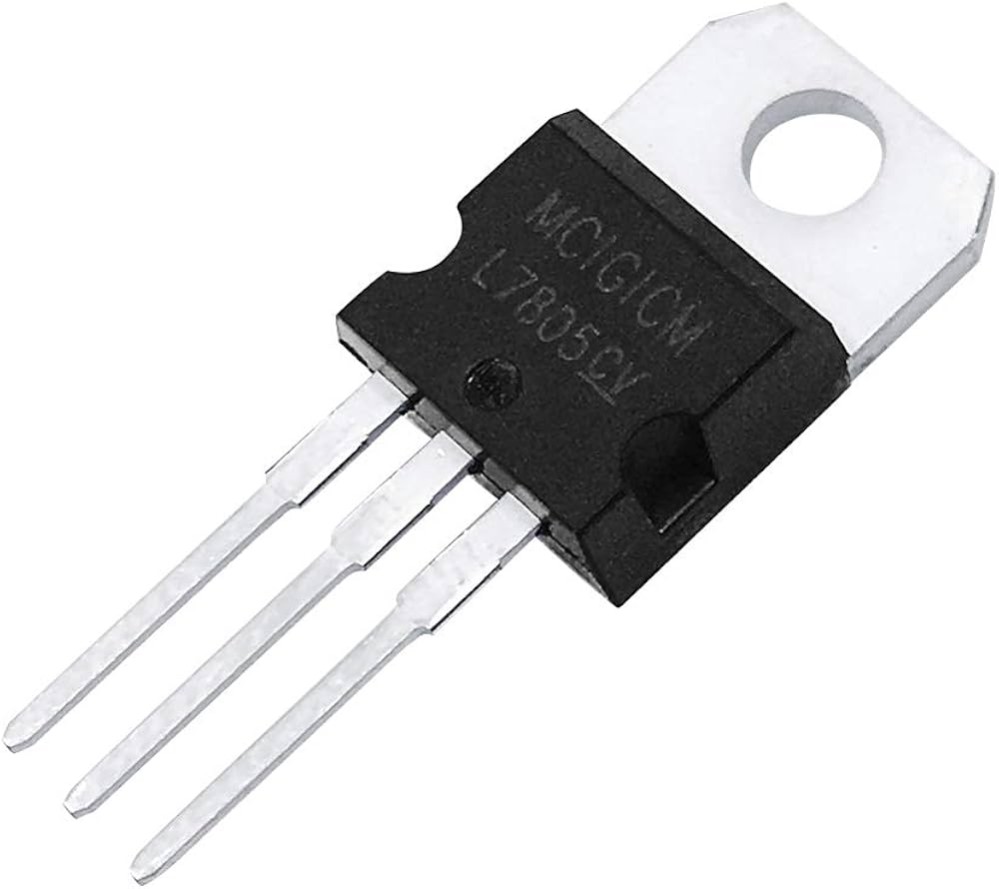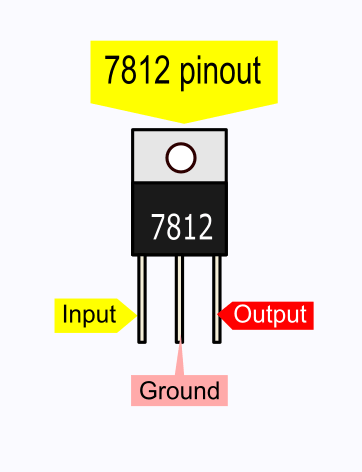





7812 VOLTAGE REGULATOR
The 7812 voltage regulator is a member of the 7800 series of voltage regulators, designed to provide a stable and fixed 12V output from a higher input voltage. It is a linear voltage regulator, similar to the 7805, but with a fixed output of 12V. The 7812 is widely used in electronic circuits that require a 12V power supply for components, such as microcontrollers, sensors, and communication devices.
₹ 11 ₹19
19



| Made In : | India |
Add FAQ
The 7812 voltage regulator is a member of the 7800 series of voltage regulators, designed to provide a stable and fixed 12V output from a higher input voltage. It is a linear voltage regulator, similar to the 7805, but with a fixed output of 12V. The 7812 is widely used in electronic circuits that require a 12V power supply for components, such as microcontrollers, sensors, and communication devices.
Key Features of the 7812 Voltage Regulator:
- Output Voltage: The 7812 provides a fixed 12V output (with a tolerance of ±2%).
- Input Voltage: The input voltage to the 7812 must be higher than 12V for proper operation. A typical range is between 14V and 35V. To achieve a stable 12V output, the input voltage should ideally be between 14V and 18V.
- Current Rating: The 7812 can supply up to 1A of current, depending on the heat dissipation and input voltage. However, the actual current it can provide may be limited by factors like the power dissipated as heat.
- Thermal Overload Protection: The 7812 includes thermal protection that shuts down the regulator if it becomes too hot, protecting the IC from damage.
- Short Circuit Protection: It has built-in short circuit protection, meaning it can tolerate a short circuit on the output without permanent damage.
- Package Types: Common packages for the 7812 include TO-220 (for through-hole mounting) and TO-263 (for surface-mount).
Pin Configuration (TO-220 Package):
- Pin 1 (Input): The unregulated voltage is connected here (usually between 14V to 35V).
- Pin 2 (Ground): The ground or common pin of the regulator is connected here.
- Pin 3 (Output): The regulated 12V output is available from this pin.
Applications of the 7812 Voltage Regulator:
-
Power Supply for Electronics:
- The 7812 is frequently used to provide a stable 12V power supply for various electronic circuits, such as microcontrollers, sensors, and communication modules.
-
Battery-Powered Circuits:
- In battery-powered devices, the 7812 can be used to convert a higher voltage (e.g., 14V from a battery pack) down to a stable 12V for powering electronics.
-
Arduino and Other Embedded Systems:
- For systems that require 12V operation, such as some Arduino projects or embedded systems, the 7812 is commonly used to provide the regulated voltage.
-
DC Motor Control:
- It can be used to supply 12V to low-power DC motors or control circuits that require a 12V supply.
-
Audio and Signal Processing:
- In audio applications or signal processing circuits, the 7812 is used to power audio amplifiers or other devices that require a stable 12V supply.
-
Communications Equipment:
- The 7812 is also used in communication equipment, like radios and transceivers, which often require a stable 12V power supply.
Example Circuit for Using the 7812:
Let’s take a simple example where you want to use a 7812 voltage regulator to power a 12V device from a higher voltage source.
Components:
- 7812 Voltage Regulator
- Capacitors (recommended for stability):
- 0.33µF capacitor on the input to reduce input noise.
- 0.1µF capacitor on the output to improve transient response and stability.
Circuit:
- Connect the Input Pin (Pin 1) of the 7812 to the +14V to +35V power source.
- Connect the Ground Pin (Pin 2) of the 7812 to the common ground.
- Connect the Output Pin (Pin 3) to the +12V line, which powers your device (e.g., a 12V motor, a microcontroller, or other 12V devices).
- Optionally, place a 0.33µF capacitor between the Input Pin and Ground to reduce input voltage spikes and noise.
- Optionally, place a 0.1µF capacitor between the Output Pin and Ground to improve stability and reduce voltage fluctuations.
Diagram:
+14V to +35V
|
[7812]
| |
0.33µF| |0.1µF
| |
GND ---- GND
|
+12V Output (for your device)
Important Notes:
-
Heat Dissipation: The 7812, being a linear regulator, dissipates the excess energy as heat. For example, if you input 24V and output 12V, the regulator will dissipate the difference (12V) as heat. If the current drawn by the load is high (e.g., 1A), this can result in significant heat generation. Therefore, you may need a heatsink or adequate ventilation to keep the regulator cool and prevent thermal shutdown.
-
Efficiency: Since the 7812 is a linear regulator, it is not as efficient as a switching regulator (buck converter), especially when there is a large voltage difference between input and output. In high-power applications, a switching regulator is more efficient, as it doesn't waste as much energy as heat.
-
Capacitors: While not always required, adding input and output capacitors (typically 0.33µF and 0.1µF) improves the regulator’s performance by reducing voltage spikes and improving transient response, especially in noisy environments.
-
Current Limiting: The 7812 has an internal current limiting feature, but it’s still important to ensure the device you’re powering doesn’t exceed the current rating of the regulator (usually around 1A). If your circuit requires more current, you might need to use a larger regulator or a switching regulator.
Advantages of the 7812 Voltage Regulator:
- Simple and easy to use: The 7812 is a reliable and straightforward component to add to a circuit when you need a stable 12V power supply.
- Widely available and low cost: The 7812 is inexpensive and can be found easily in many electronics stores or online.
- Built-in protection: The 7812 includes protection against thermal overload and short circuits, which improves the reliability of your circuit.
Conclusion:
The 7812 voltage regulator is a highly useful and reliable component for supplying 12V to electronic circuits. It is widely used in various applications such as microcontroller projects, audio systems, motor controllers, and communication equipment. While the 7812 provides a stable and regulated 12V output, keep in mind that it is a linear regulator and may require a heatsink or thermal management in high-current applications. For higher efficiency, especially in high-power circuits, switching regulators (buck converters) may be a better choice.

0 Reviews For this Product









2.jpeg&width=225&quality=80)
2.jpeg&width=225&quality=80)
.jpeg&width=225&quality=80)

